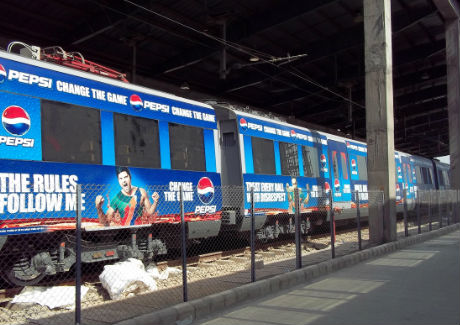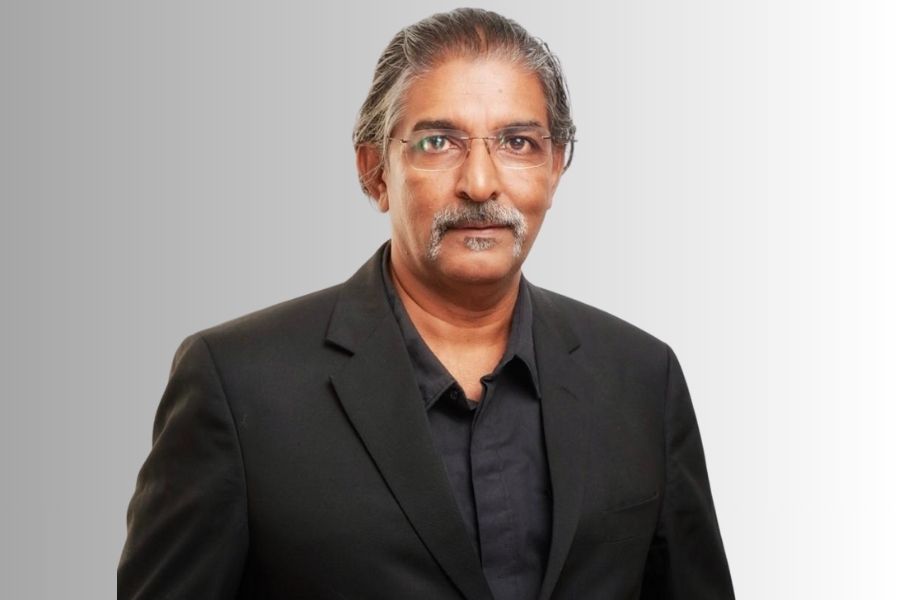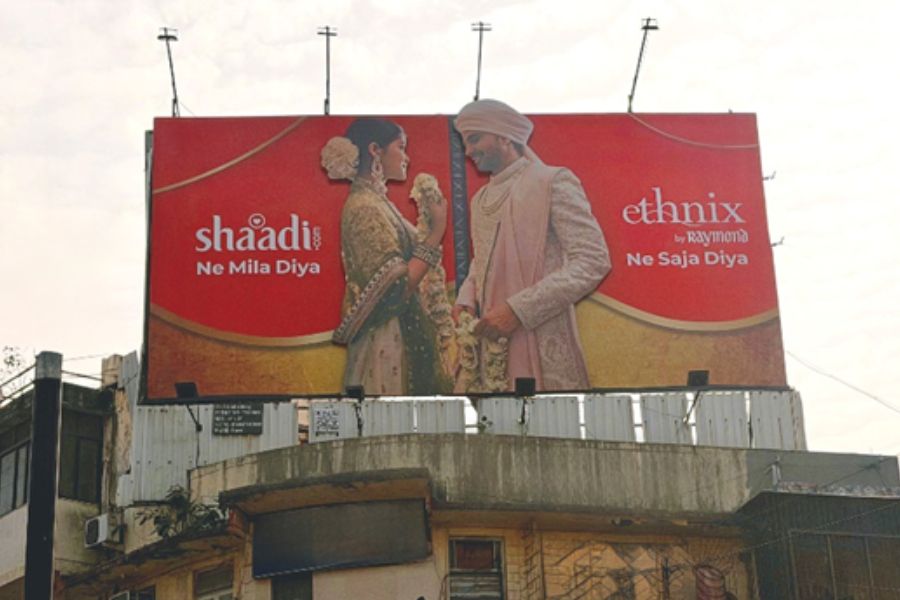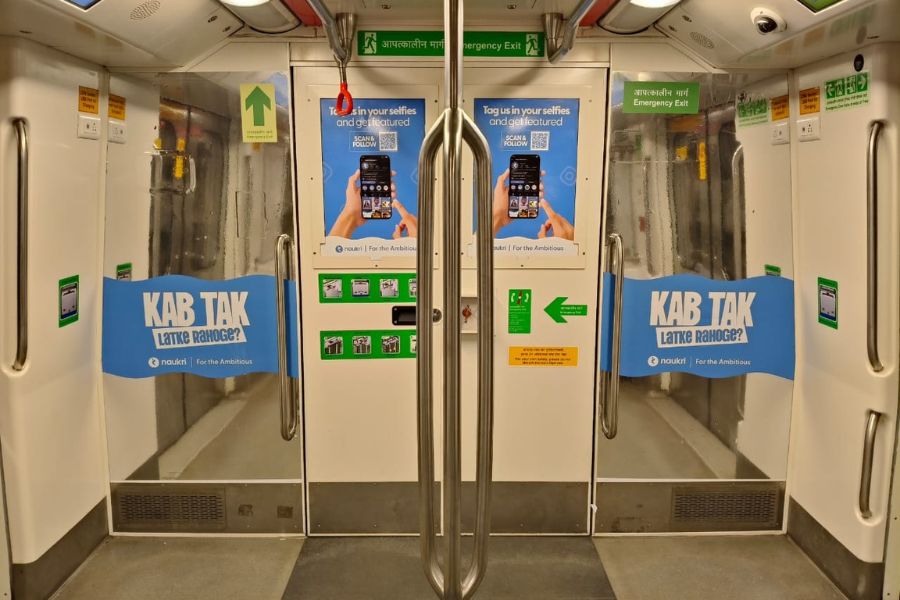A FICCI-KPMG report on the media and entertainment sectors stated that the Indian OOH industry was worth Rs 1930 crore (2013), and estimated to grow at 9.2 per cent over the next few years. Transit OOH business comprising airports, trains, Metros and buses accounted for nearly 34 per cent of the OOH spend. According to the report, transit OOH business experienced ‘accelerated growth’ in 2013 with various airports modernised and new Metro projects in the pipeline. It would continue to outpace other OOH media options, the report said.
But where does the Metro figure in the scheme of things? Currently, the modern air-conditioned train networks are operational in Delhi, Kolkata, Bengaluru and Gurgaon, and will soon launch in Mumbai. Metros offer multiple advertising options, including train wraps and sponsorship options such as naming rights of the station. But the sense one gets from OOH players is that it hasn’t taken off, yet.
Outdoor media company Times OOH holds exclusive advertising rights on Mumbai Metro One for 15 years. It expects to earn around Rs 15 crore in revenues annually from the advertising rights of Mumbai Metro, according to Aman Nanda, vice president, Times OOH. At a media briefing to announce advertising options, he said, “On an average six lakh commuters will use the Mumbai Metro on a daily basis and four crore unique commuters would access it annually. The Metro system is the most powerful way to reach out to the working class, students, the premium SEC A audiences and so on.”
But there are issues impeding its offtake, which is sub-optimal currently, reason some OOH practitioners. Shashi Sinha, senior VP, revenue– media assets and airports, Laqshya Media, said, “In India, there are very few Metros present and for those that are there, tenders have not been issued for advertising and many are not being marketed. Big Street, the OOH arm of Reliance Broadcast Network, handled a section of the Delhi Metro but it shut shop in 2012. Presently, Metro advertising accounts for just 2 per cent of the OOH kitty.”
The Metro ‘psyche’
Metro offers a strong and stable psychographic profile of audience as like other OOH options it is (largely) demography-neutral, according to Sinha.
He added, “Outdoor works predominantly on psychographics because it is demography-neutral and everyone who is outdoors can consume the media. There is no filter. Everyone on the Metro is for a purpose i.e. to commute from one point to the other. There is a very determined psychography that emerges, which is one of the biggest advantages of the Metros. Hence, brands can create messages that are psychographicaly determined.”
Another point where Metro scores (arguably much like other transit media) over other OOH options is that it offers a captive audience for a longer duration, points out Mandeep Malhotra, president, head, DDB MudraMax. He reasoned, “The most beautiful part of Metro transit media is that you have at least 20 to 40 minutes of dead time on your hand. By dead time, I mean that you are forced to look into a message in the Metro train or at a station. In addition, the Metro is technically not as cluttered as other media which is very important as OOH is considered as a ‘seven seconds media’. The Metro media gets an average of thirty minutes of audience viewership.”
For brands, this should ideally be an opportunity to maximise RoI. Malhotra added, “There is no common currency for India but I can say confidently that the RoI can be 300 times more than the normal outdoor media (billboards) that exist.”
Why isn’t it taking off?
Metros offer an indulgent environment to the commuters as they are air-conditioned and cleaner than the rest of Indian local rail transport networks. Hence, the Metros are more premium than local trains, be it on ticketing or ad rates. But for this factor to work for brands, they will need to be maintained well.
Haresh Nayak, regional director, Posterscope (Apac), underlined, “The rapid Metro in Delhi are new so a lot of brands are going for it but if the upkeep goes down then the brands will move out. In Kolkata, the hygiene order and maintenance of the medium itself does not work and hence there are few brands visible there. The maintenance and quality of ambience at the Metro will result in the brands making a move.”
While the psychographic commonality is an advantage, there is a demographic skew, reasons Pramod Bhandula, Managing Director, JCDecaux Advertising India. He points out that Metro, being a form of public transport, attracts a certain profile of audience that is dominantly male-skewed and belongs to the working class. Hence, its appeal is not universal, he contends.
He explained, “High value categories like Gucci, Chanel, Mercedes or Boeing would not advertise in the Metro. But at the same time consumer durables, FMCG, automobile would opt for this mass medium.”
The presence of multiple vendors involved in the media buying process for the Metro is also a deterrent for a brands, points out Sinha. Delhi Metro has five media concessionaires.
He elaborated, “You have multiple media concessionaires to talk to for multiple stations and multiple routes. That made media buying very difficult and therefore the executing becomes tedious as well. From an industry point of view, if there is one media concessionaire who has it all then it is easier for the client and the media buyers to co-ordinate and exploit the media value which Metros offer.”
In January, Vodafone announced the launch of the ‘Vodafone Belvedere rapid Metro station’ in Gurgaon. This was the first instance in India of a brand taking up naming rights of the station. Similar options are being offered by Times OOH for Mumbai Metro as well. A ‘Train Wrap’ by Pepsi for its ‘Change the Game’ on the Delhi Airport Metro line pushed the needle in the past. But the instances of ‘wow’ are few and far between. There is hope though, that innovation will follow maturity of the medium.




